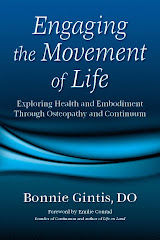I don't have any symptoms or pain in my pelvis, in fact most of my pain is not where I have bone mets, it's in my joints (almost all of them) and has nothing (directly) to do with cancer. Joint and muscle pain are the main side effects of my treatment. So, after one year of toughing it out on Arimidex (anastrozole) I have switched to Aromasin (exemestane). This estrogen blocking drug should be equal in anticancer action, and will hopefully have fewer side effects. It should take about six weeks to know how well it's working.
I was looking for some words of wisdom about living with the unknown and unknowable and I flipped to P.145 of my book,
"The nature of time and “reality” is unknowable, but it is helpful to question the conclusions we have drawn about how we perceive and respond to how we think things are. Suspending a definitive opinion about the way you think things are might give access to a different possible outcome.
When a physician examines a patient with the intent to make a diagnosis, he or she might conclude that something happened in the past that altered the physical properties or functioning of the body. When any of us examine our own lives with the intent to analyze, understand, or have insight about a problem, we might draw the same type of conclusions about the influence of the past. When this type of judgment is made, it tends to get named, labeled, and interpreted. At worst, generalized conclusions are drawn based on it. Diagnoses get dragged around and applied to the present and the future. Identifying with your problem, with something that happened to you, with your diagnosis or pain and using it as the reference point keeps you bound to it—thus keeping the residue of the past in your view of the present and future.
The mechanics of the past may be interesting and useful in order to understand what happened, but we don’t need a map to get back to the territory of the past. We’ve already been there. We want to enter the new territory of the future. Holding on to the residue of the past and projecting it into the future does not leave space for the full expression of the potential held in the future. We can become misinformed and misled about the prognosis for the future by the remnants of the past. Health and the therapeutic process can only be expressed fully if the path to the future is held clear and open for what has yet to happen, to unfold and reveal itself. Health transcends time; potential is always accessible.
The map of the past is not the territory of the present. The actuality of the future cannot exist until it emerges, and once it does so, it is not in the future anymore. It is an event that has already occurred. Once the action that was dictated into the present from the unfolding future produces a result, the effects of the process exist as an event already in the past. In this view it becomes clear how healing—as a creative act of the organism creating its future—can only happen to its fullest extent and potential if we hold the space for it to emerge and not clutter the field with attempts to fix and resolve the past. The philosophical view of life unfolding in this manner can be seen as more fully expressing itself if the future moves into the present, rather than attempting to fix or resolve the past and move it toward the future."I know this last paragraph is somewhat wordy, but read it slowly, one line at a time, and try to feel what happens in your body when you take a breath and allow yourself to experience the present as the space between your past and future without any judgments or preconceived expectations. Instead of plowing ahead into the future, allow yourself to sit in the stillness, and let the events of time unfold, as if the future is approaching to meet you where you are.

